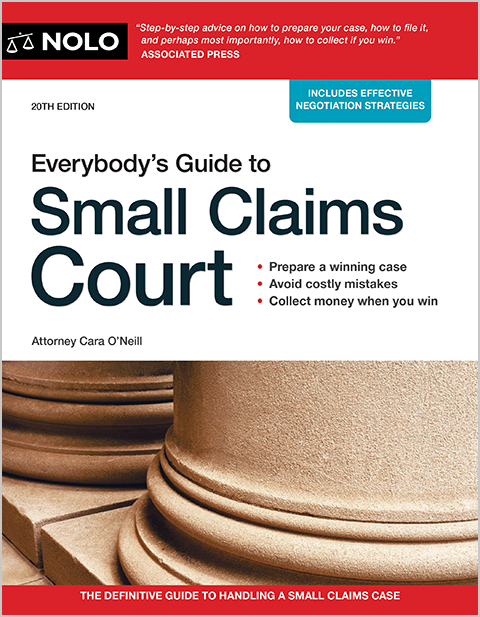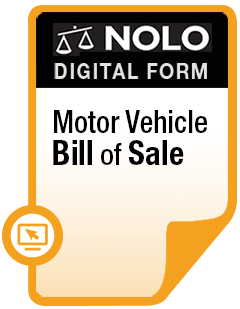After any type of car accident, even a seemingly minor back injury can have a major impact on your daily life.
Thousands of traffic accidents occur every day, causing all kinds of injuries. According to the National Highway Traffic Safety Administration (NHTSA), 1.9 million people were injured in passenger vehicle crashes in 2022, and a significant percentage of those drivers and passengers experienced car accident injuries affecting the back and spine.
Even low-speed collisions can cause back injuries, because the human body simply isn't designed to absorb the jarring impact of a car accident. And in turn, even a seemingly minor back injury can have a significant impact on your daily life. In this article, we'll cover:
- common types of back injuries caused by car accidents
- symptoms and treatment for back injuries
- the potential value of a back injury case, and
- your options for making a claim for compensation (called "damages") for your back injuries after a crash.
What Kinds of Back Injuries Come From Car Accidents?
The spine can be divided into three distinct areas:
- cervical vertebrae (neck)
- thoracic vertebrae (upper back), and
- lumbar vertebrae (lower back).
Each section of the spinal cord and its vertebrae are surrounded by discs, muscles, tendons, ligaments, and nerves. Injuries to any of this bone or soft tissue can cause varying degrees of pain—from mild to debilitating, and from temporary to permanent.
Let's take a closer look at specific kinds of back injuries that can result from a car accident.
Thoracic Spine Injuries
Injuries to the thoracic spine tend to be serious. The thoracic spine, or upper back, connects to the ribs and chest region. Sprains and fractures in this area are usually caused by high-velocity auto accidents, and can lead to permanent nerve damage.
Lumbar Spine Injuries
The lumbar spine includes the five largest vertebrae and the strongest of the muscles necessary to provide stability for the spine, so a sprain or strain to the lumbar spine can be particularly painful. A sprain involves actual damage to the ligaments, while a strain is a stretching of the ligaments, tendons, and muscles. Sprains and strains can cause swelling, bruising, and tenderness. They might also limit movement and severely impact your ability to perform daily activities.
Herniated Discs
In a car accident, some drivers and passengers experience herniated discs. Discs are the cushions that separate the vertebrae and protect the spine. A herniated disc occurs when a disc is displaced. Often, the herniated disc then puts pressure on the spinal cord and its surrounding nerves. The most common symptoms associated with herniated discs are:
- sudden and intense pain in the lower region of the back, and
- numbness in the legs.
Spinal Cord Injuries
The most serious back injuries involve the spinal cord. A spinal cord injury—damage to any part of the spinal cord or nerves at the end of the spinal canal—often causes permanent changes in strength, sensation, and other body functions below the site of the injury. Some spinal cord injuries cause total or partial paralysis.
Depending on the type of injury or treatment received, victims of spinal cord injuries might be at risk for secondary medical problems, like infection, blood clots, pneumonia, and spinal fluid leaks.
Cervical/Neck Injuries
The most common type of car accident injury that affects the upper spine and neck are "whiplash"-like strains, hyperextensions, and cervical sprains. These are soft tissue injuries, and while they can cause significant discomfort and physical limitations, they don't show up on an x-ray or other imaging tests. So, if you're making a claim for these kinds of injuries after a car accident, it's crucial to have them documented in your medical records. Check out everything you need to know about whiplash injuries and claims.
Symptoms of Car Accident Back Injuries
Some people experience severe back pain or restricted mobility immediately after a crash. Others develop symptoms over days or even weeks. Back injuries typically cause:
- pain
- weakness
- headaches
- stiffness
- loss of normal movement
- muscle spasms
- numbness
- tingling, and
- difficulty standing or walking.
Many people assume back pain will resolve on its own within a few days. But if left untreated, even minor back injuries have the potential to cause chronic pain and mobility limitations.
Treatment of Car Accident Back Injuries
After a car accident, doctors diagnose and assess the severity of back injuries through the use of x-rays, CT scans, MRIs, myelograms, and bone scans. Once a diagnosis is made, treatment varies according to the type and severity of the injury sustained. Many back injuries require only short-term, temporary treatments like:
- pain medication
- injections for inflammation
- physical therapy, and
- chiropractic care.
Serious back injuries might require surgery to alleviate pressure on the spinal cord itself or the surrounding nerves. Some back surgeries involve removing parts of vertebrae, and even fusing vertebrae together after the removal of a ruptured disk.
The Value of a Car Accident Back Injury Claim
Typical compensation for a back injury claim covers an injured person's economic and non-economic losses ("damages" in the language of the law). Damages can include:
- past and future medical bills for treating the injuries
- lost income resulting from the accident
- future lost earnings (diminished earning capacity) the claimant will experience
- mental and physical pain and suffering caused by the car accident injuries, and
- loss of consortium or companionship.
The value of your back injury claim depends on a variety of factors, including:
- who was at fault for the car accident
- available car insurance coverage, and
- whether you took reasonable steps to minimize the financial impact of your back injury (you "mitigated your damages" as the legal saying goes).
Making a Claim for Damages After a Back Injury
After a car accident, you have the legal right to seek compensation for your injuries and losses by filing a car accident lawsuit in court. Most people file an insurance claim first, and try to get a fair settlement that way. As soon as possible, contact your insurance company to report that you've been injured in an accident. From there, your car insurance claim options will depend on what kind of insurance coverage is available, who might have caused the accident, and where you live. For example:
If you live in a no-fault car insurance state, you'll almost always start by filing a claim with your own car insurance company for your car accident injuries, regardless of who caused the crash.
If the other driver was clearly at fault, and you don't live in a no-fault state, you likely have the option of filing a third-party car insurance claim with the other driver's insurance company. You'll need to provide the other driver's insurer with information and documentation related to your injuries, but be careful when you speak to the other driver's insurance company—they represent the other party's interests, not yours.
If you were in an accident with an uninsured driver, you can make a claim under your own uninsured motorist coverage, if you have it.
Most car accident claims settle at some point during the insurance claim process. Learn more about putting together a car accident claim and what to expect in the settlement process:
- Gathering evidence after a car accident
- How to start a car insurance claim
- Tips for settling a car insurance claim
Talk to a Lawyer
A lawyer can make your best case for compensation during settlement negotiations or in court. A skilled legal professional will help you gather evidence, make sure every loss is included in your claim, and negotiate with insurance adjusters and defense attorneys on your behalf. Find out more about how an attorney can help with your car accident claim and get tips on finding the right personal injury lawyer.



